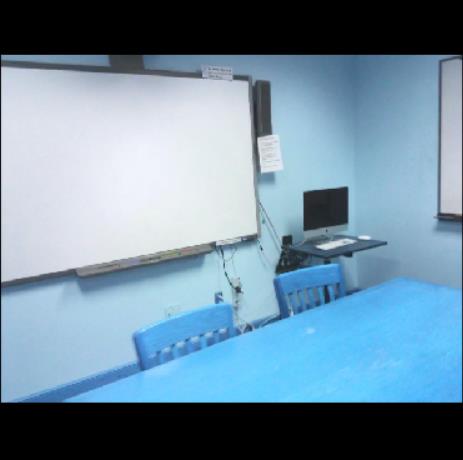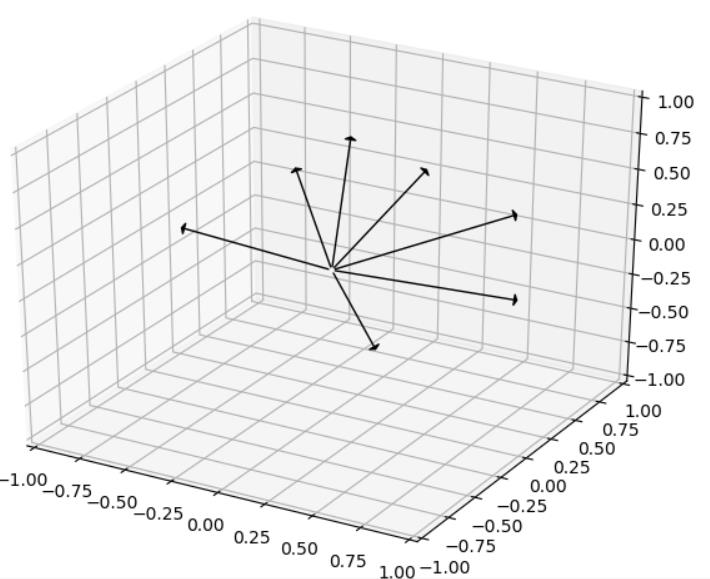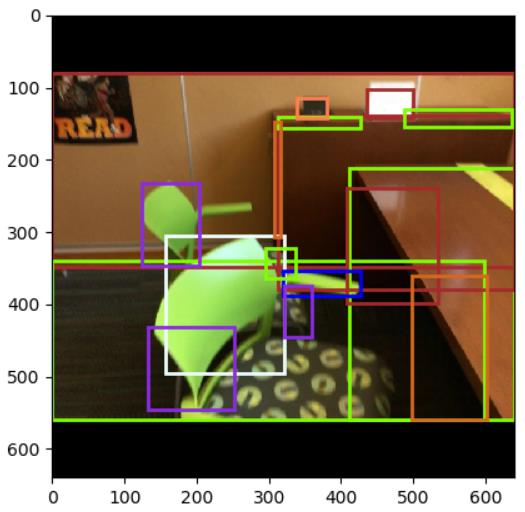PlaneRCNN Variables
X (Input)
1. images
-
attributes
shape = (1, 3, 640, 640)
pixel_range = [0, 255] - config.MEAN_PIXEL
-
original image size:
968 (height) * 1296 (width)
-
operations:
1. datasets/scannet_scene.py-class ScanNetScene()-def __getitem__():
image = cv2.imread(imagePath)
shape = (968, 1296, 3)
pixel_range = [0, 255]
channel = (b, g, r)
image = cv2.resize(image, (depth.shape[1], depth.shape[0]))
shape = (480, 640, 3)
2. datasets/plane_stereo_dataset.py-class PlaneDataset(PlaneDatasetSingle)-def __getitem__():
image_1, planes_1, plane_info_1, segmentation_1, depth_1, camera_1, extrinsics_1, semantics_1 = scene[imageIndex]
shape = (480, 640, 3)
info_1 = [image_1, planes_1, plane_info_1, segmentation_1, depth_1, camera_1, extrinsics_1, semantics_1]
image, planes, plane_info, segmentation, depth, camera, extrinsics, semantics = info
image = cv2.resize(image, (depth.shape[1], depth.shape[0]))
shape = (480, 640, 3)
image, image_metas, gt_class_ids, gt_boxes, gt_masks, gt_parameters = load_image_gt(self.config, index, image, depth, mask, class_ids, parameters, augment=self.split == 'train')
shape = (640, 640, 3)
Top 80 and bottom 80 lines of pixels are 0 padded.
padded image (bgr)
image = utils.mold_image(image.astype(np.float32), self.config)
shape = (640, 640, 3)
pixel_range = [0, 255] - config.MEAN_PIXEL
image = torch.from_numpy(image.transpose(2, 0, 1)).float()
shape = (3, 640, 640)
2. image_metas
-
attributes
shape = (1, 16)
looks like [226078 480 640 3 80 0 560 640 1 1 1 1 1 1 1 1]
image_metas[0]: image_id
image_id = 10000 * scene_id + image_num, e.g. 226078 indicates scene_id = 22, image_num = 6078. Scene_id has the same order as the corresponding scannetv1 .txt file (index starts from 0). E.g., scene_id = 22 for a training image means the image is from the scene in the 23rd line of scannetv1_train.txt
image_metas[1:4]: [height, width, channels] befor resize_image()
image_metas[4:8]: (y1, x1, y2, x2) in pixels. The area of the image where the real image is (excluding the padding)
[80 0 560 640] indicates the left top point of the real image excluding padding is image[80, 0], and the right bottom point image[560, 640]
len(image_metas[8:]): #classes = 8
-
operations:
1. datasets/plane_stereo_dataset.py-class PlaneDataset(PlaneDatasetSingle)-def __getitem__():
image, image_metas, gt_class_ids, gt_boxes, gt_masks, gt_parameters = load_image_gt(self.config, index, image, depth, mask, class_ids, parameters, augment=self.split == 'train')
As has been explained in attributes.
image_metas = torch.from_numpy(image_metas)
3. rpn_match
-
attributes
shape = (1, 1023001, 1)
range = {-1, 0, 1}
-
operations:
1. datasets/plane_stereo_dataset.py-class PlaneDataset(PlaneDatasetSingle)-def __getitem__():
TODO: edit after 5. - 6.
rpn_match, rpn_bbox = build_rpn_targets(image.shape, self.anchors, gt_class_ids, gt_boxes, self.config)
rpn_match = rpn_match[:, np.newaxis]
rpn_match = torch.from_numpy(rpn_match)
4. rpn_bbox
5. gt_class_ids
-
attributes
shape = (1, #planes)
range = [1, 7]
acquired by KNN (as described in 3.1-plane normal estimation in the paper)
looks like [2 3 3 2 5 2 1 1 4 6 1 2 3 3 3 4 7]
-
operations:
1. datasets/scannet_scene.py-class ScanNetScene()-def __getitem__():
self.planes = np.load(scenePath + '/annotation/planes.npy')
shape = (xxx, 3), e.g. (338, 3)
normal vectors of planes
newPlanes.append(self.planes[oriIndex])
planes = np.array(newPlanes)
shape = (xxx, 3)
select appropriate ones from planes according to segmentation
extrinsics_inv = np.array(extrinsics_inv).reshape((4, 4))
extrinsics_inv is the 4 * 4 camera extrinsic matrix read from scenexxxx_xx/pose/xx.txt, it looks like
-0.955421 0.119616 -0.269932 2.655830
0.295248 0.388339 -0.872939 2.981598
0.000408 -0.913720 -0.406343 1.368648
0.000000 0.000000 0.000000 1.000000
To learn more about camera matrix, please refer to this article (Chinese). Here is a brief introduction to the extrinsic matrix.
The top left 3 * 3 square matrix is a normalized orthogonal matrix and it represents a rotation matrix.
-0.955421 0.119616 -0.269932
0.295248 0.388339 -0.872939
0.000408 -0.913720 -0.406343
The top right 3 * 1 vector represents translation parameters.
2.655830
2.981598
1.368648
extrinsics = np.linalg.inv(extrinsics_inv)
planes = self.transformPlanes(extrinsics, planes)
Convert the vectors in the real-world coordinate into the camera coordinate.
transformation process
Projection, the output vector, is the projection of affine on rotation. Affine is the result of the affine transformation (rotation + translation); rotation is the result of the rotation transformation.
2. datasets/plane_stereo_dataset.py-class PlaneDataset(PlaneDatasetSingle)-def __getitem__():
plane_offsets = np.linalg.norm(planes, axis=-1)
plane_normals = planes / np.expand_dims(plane_offsets, axis=-1)
normalization
distances_N = np.linalg.norm(np.expand_dims(plane_normals, 1) - self.config.ANCHOR_NORMALS, axis=-1)
self.config.ANCHOR_NORMALS.shape = (7, 3)
distance_N.shape = (#planes, 7)
anchor normals
normal_anchors = distances_N.argmin(-1)
class_ids.append(normal_anchors[planeIndex] + 1)
the nearest anchor
class_ids = np.array(class_ids, dtype=np.int32)
6. gt_boxes
-
attributes
shape = (1, #planes, 4)
ground truth boxes
1. datasets/scannet_scene.py-class ScanNetScene()-def __getitem__():
segmentation = cv2.imread(segmentationPath, -1).astype(np.int32)
shape = (480, 640, 3)
segmentation = (segmentation[:, :, 2] * 256 * 256 + segmentation[:, :, 1] * 256 + segmentation[:, :, 0]) // 100 - 1
newSegmentation = np.full(segmentation.shape, fill_value=-1, dtype=np.int32)
newSegmentation[segmentation == oriIndex] = newIndex
segmentation = newSegmentation
oriIndex excludes plane instances that are small and close to the origin of camera coordinates.
non-planar pixels are denoted as -1
segmentation, plane_depths = cleanSegmentation(image, planes, plane_info, segmentation, depth, self.camera, planeAreaThreshold=self.options.planeAreaThreshold, planeWidthThreshold=self.options.planeWidthThreshold, confident_labels=self.confident_labels, return_plane_depths=True)
2. datasets/plane_stereo_dataset.py-class PlaneDataset(PlaneDatasetSingle)-def __getitem__():
m = segmentation == planeIndex
shape = (480, 640, num_instances)
range = {0 (False), 1 (True)}
instance_masks.append(m)
mask = np.stack(instance_masks, axis=2)
shape = (480, 640, #planes)
image, image_metas, gt_class_ids, gt_boxes, gt_masks, gt_parameters = load_image_gt(self.config, index, image, depth, mask, class_ids, parameters, augment=self.split == 'train')
draw the bounding box according to a segmentation



